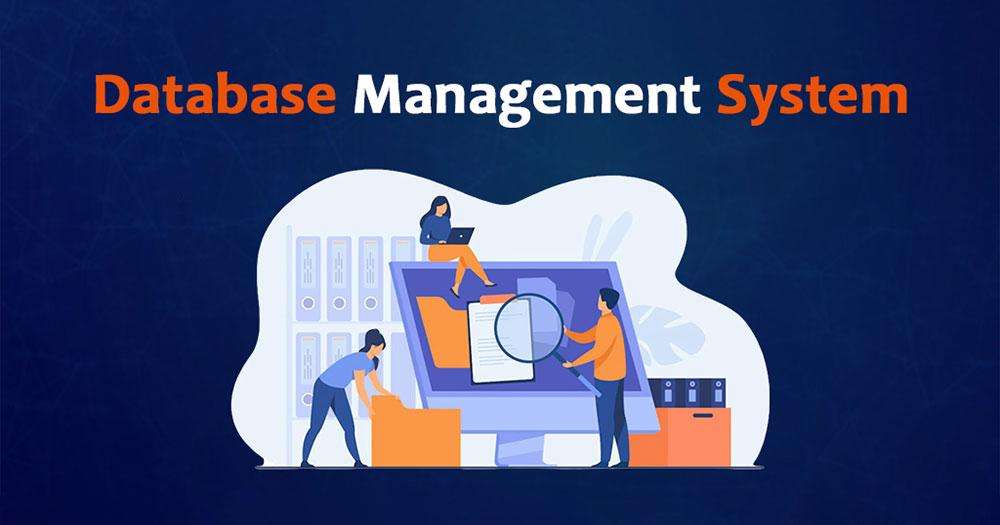A Database Management System (DBMS) is a software application that allows users to create, manage, and manipulate databases. It provides an interface for users to interact with the database, allowing them to store, retrieve, update, and delete data.

DBMS is designed to handle large amounts of data efficiently and securely. It serves as an intermediary between the user and the database, ensuring that data is organized, structured, and easily accessible. It also provides mechanisms for data integrity, security, and concurrency control.
Components of a DBMS
A DBMS consists of several components that work together to provide a comprehensive database management solution:
- Database: The database is a collection of related data that is organized and stored in a structured manner. It serves as a repository for all the data that is managed by the DBMS.
- Database Schema: The database schema defines the structure and organization of the database. It specifies the tables, fields, relationships, and constraints that define the data model.
- Data Manipulation Language (DML): DML is a language that allows users to retrieve, insert, update, and delete data in the database. It provides commands and statements to perform these operations.
- Data Definition Language (DDL): DDL is a language that allows users to define and manage the structure of the database. It provides commands and statements to create, modify, and delete database objects such as tables, indexes, and views.
- Data Query Language (DQL): DQL is a language that allows users to retrieve and manipulate data in the database. It provides commands and statements to perform complex queries and generate reports.
- Data Control Language (DCL): DCL is a language that allows users to control access to the database. It provides commands and statements to grant or revoke permissions, define roles, and enforce security policies.
Benefits of Using a DBMS
Using a DBMS offers several benefits to organizations and individuals:
- Data Centralization: A DBMS allows for the centralization of data, eliminating the need for multiple copies of the same data. This improves data consistency and reduces redundancy.
- Data Integrity: A DBMS enforces data integrity constraints, ensuring that data is accurate, consistent, and valid. It prevents the insertion of duplicate or inconsistent data.
- Data Security: A DBMS provides mechanisms for securing data, such as user authentication, access control, and encryption. It protects sensitive information from unauthorized access.
- Data Accessibility: A DBMS allows multiple users to access and manipulate data concurrently. It provides mechanisms for managing concurrent access and ensuring data consistency.
- Data Scalability: A DBMS can handle large amounts of data and scale to accommodate growing data volumes. It provides mechanisms for efficient storage, indexing, and retrieval of data.
- Data Backup and Recovery: A DBMS provides mechanisms for backing up and recovering data in the event of system failures or data corruption. It ensures the availability and reliability of data.
Types of DBMS
There are different types of DBMS, each designed for specific purposes and use cases:
- Relational DBMS (RDBMS): RDBMS is the most common type of DBMS. It stores data in tables with rows and columns, and supports SQL as the query language.
- Hierarchical DBMS: Hierarchical DBMS organizes data in a tree-like structure, with parent-child relationships between records.
- Network DBMS: Network DBMS organizes data in a network-like structure, with records linked by pointers.
- Object-Oriented DBMS (OODBMS): OODBMS stores data in objects, which encapsulate both data and behavior.
- Document DBMS: Document DBMS stores and retrieves data in document formats, such as JSON or XML.
- Graph DBMS: Graph DBMS stores and analyzes data as nodes and edges, representing relationships between entities.
Each type of DBMS has its own strengths and weaknesses, and is suitable for different types of applications and data models.
Advantages of Using a DBMS
Implementing a DBMS offers several advantages over traditional file-based systems:
- Data Centralization: DBMS allows for centralized storage of data, eliminating data redundancy and ensuring data consistency.
- Data Sharing and Collaboration: DBMS enables multiple users to access and manipulate data simultaneously, facilitating collaboration and improving productivity.
- Data Security: DBMS provides robust security mechanisms to protect sensitive data from unauthorized access and ensure data privacy.
- Data Integrity: DBMS enforces integrity constraints and rules to maintain the accuracy and consistency of data.
- Data Scalability: DBMS can handle large volumes of data and can scale up or down as per the organization’s needs.
- Data Recovery: DBMS offers backup and recovery mechanisms to prevent data loss in the event of system failures or disasters.
Conclusion
A Database Management System (DBMS) is a crucial tool for managing and manipulating data efficiently and securely. It provides a structured and organized approach to storing, retrieving, updating, and deleting data. By centralizing data, enforcing data integrity, ensuring data security, and enabling concurrent access, a DBMS offers numerous benefits to organizations and individuals. Understanding the different components and types of DBMS can help in choosing the right solution for specific needs and use cases.



good
achhha hai